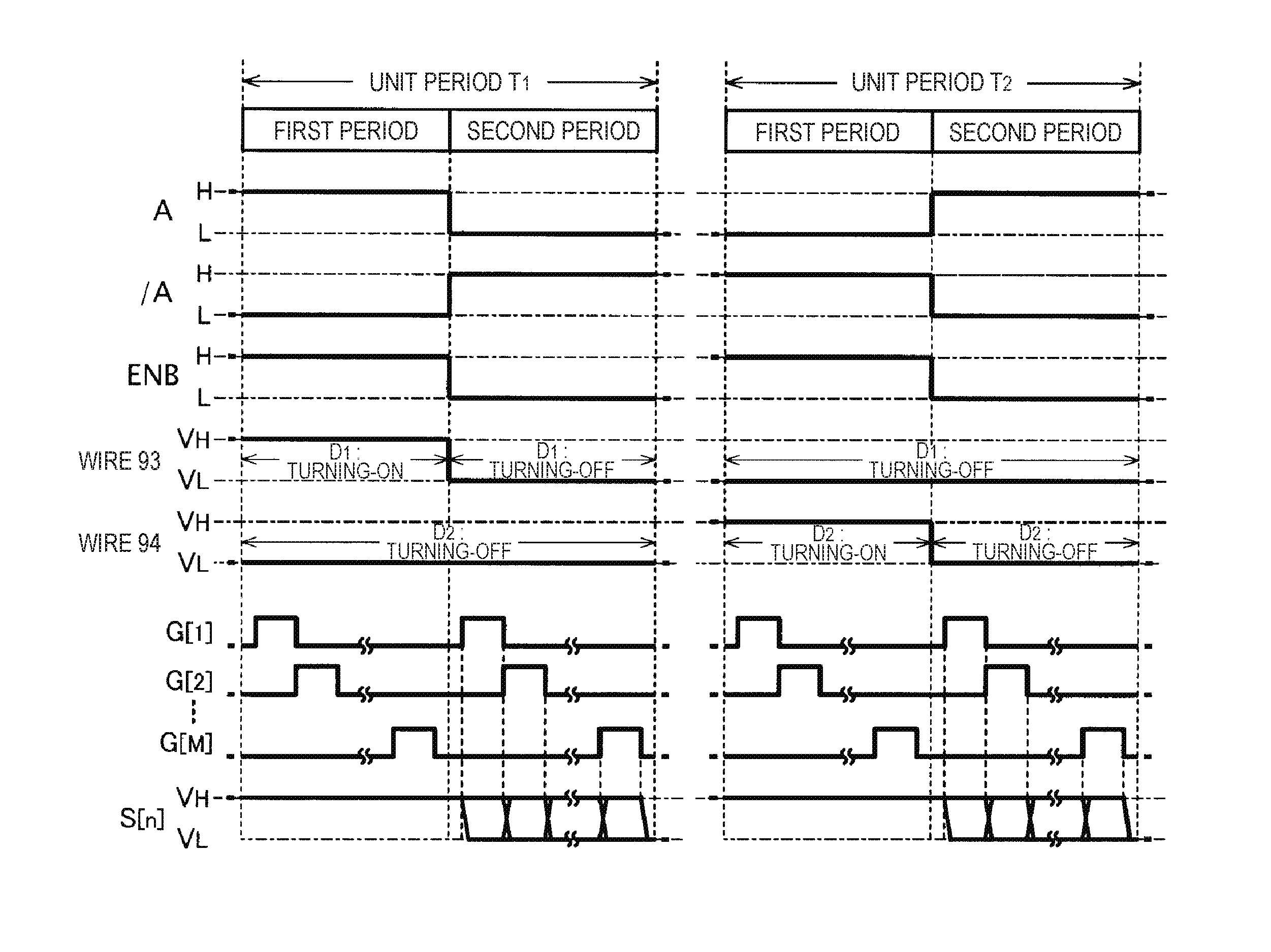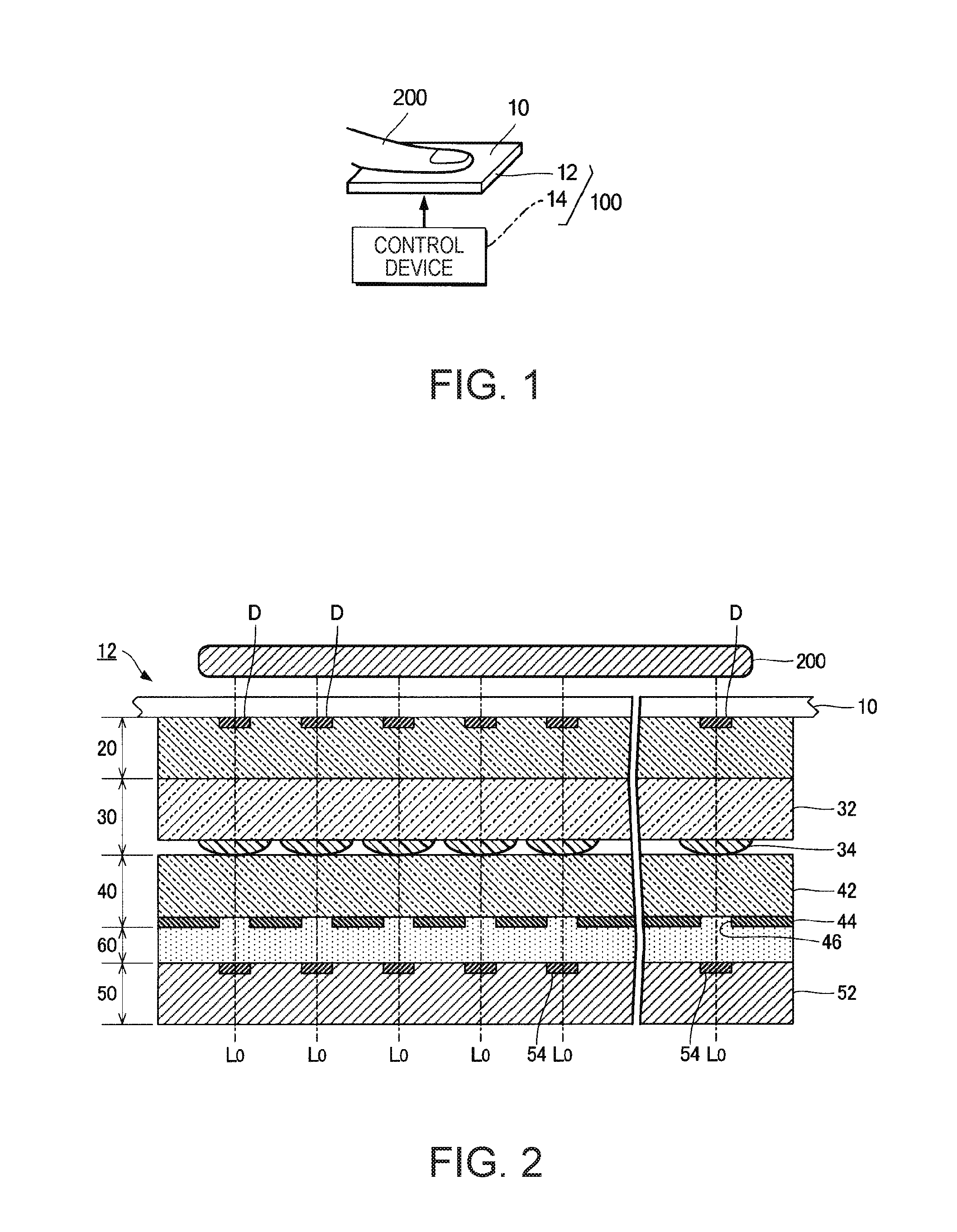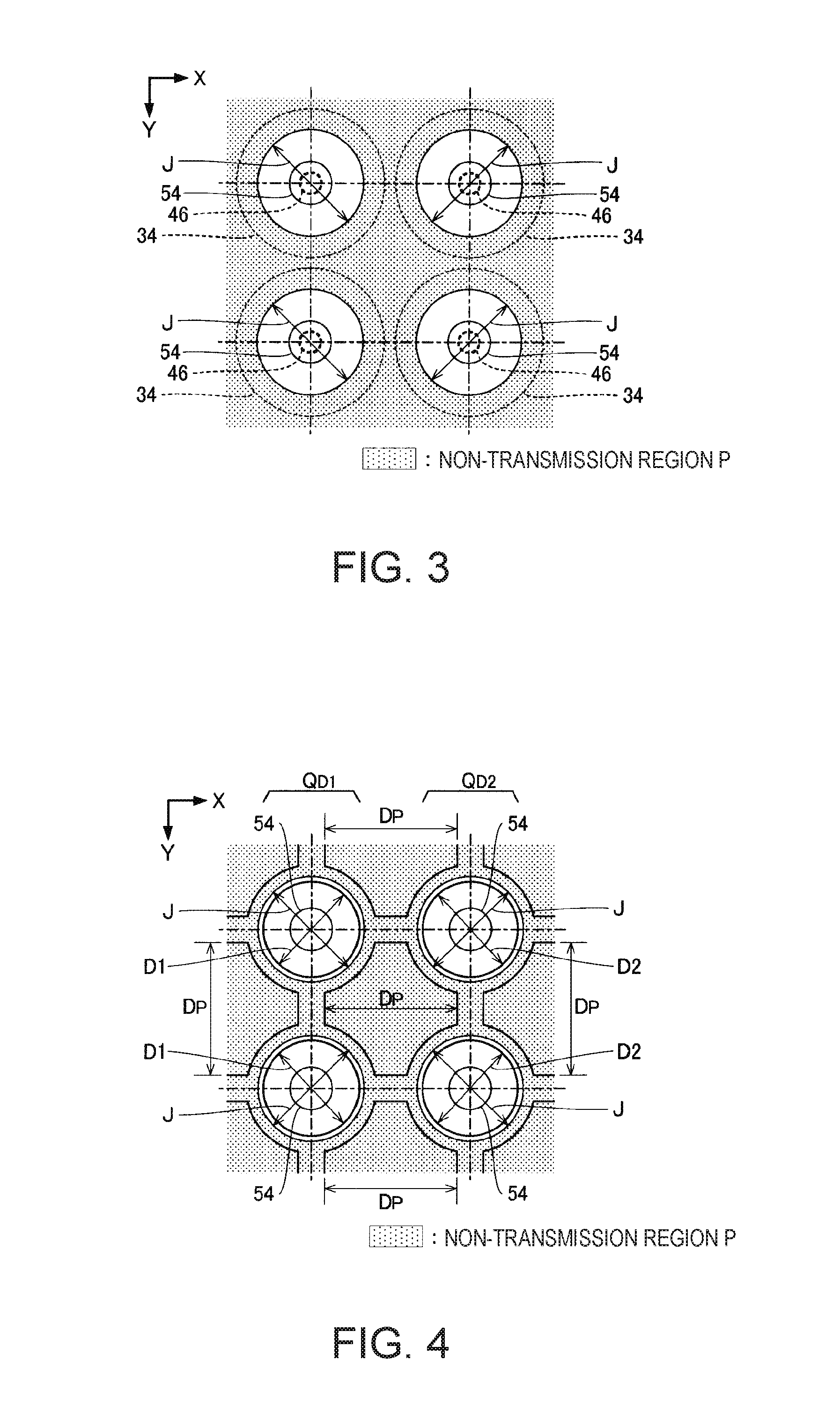Imaging device, and controlling method of imaging device
a technology of imaging device and control method, which is applied in the field of imaging subject technology, can solve problems such as the deterioration of light-emitting elements, and achieve the effect of improving the quality of light-emitting elements
- Summary
- Abstract
- Description
- Claims
- Application Information
AI Technical Summary
Benefits of technology
Problems solved by technology
Method used
Image
Examples
embodiment
[0031]FIG. 1 is a schematic view of a biological information generation device 100 to which an imaging device 12 according to a preferred embodiment of the invention is applied. The biological information generation device 100 is a measurement device that images a subject 200 such as a finger of an object to be tested and measures biological information (for example, an oxygen saturation degree or blood sugar level) according to the result of the imaging, and includes the imaging device 12 and a control device 14. The imaging device 12 is a device that images the subject 200, and the control device 14 controls operations of the imaging device 12 and generates biological information. For example, the control device 14 is implemented as a central processing unit (CPU) that executes operations of controlling the imaging device 12 and generating biological information by executing programs stored in a storage device (not illustrated).
[0032]FIG. 2 is a sectional view of the imaging devic...
modification example
[0076]The above-described embodiment can be modified in various manners. Specific modification examples are described below. Two or more examples arbitrarily selected from the following description may be appropriately combined in a range in which there is no contradiction therebetween.
[0077](1) The configuration of the unit circuit K is not limited to the illustration of FIG. 6. For example, as illustrated in FIG. 9, it is possible to provide a transistor TRS between the first electrode E1 of the light-emitting element DP and a wire 97 to which a voltage VSS is supplied. The voltage VSS is a voltage lower than the voltage VL (for example, ground voltage). The gate of the transistor TRS is connected to the gate of the transistor TDR. In a case where the drive signal S[n] is set to the voltage VL when the scanning line 95 in the m-th row is selected, the transistor TRS is maintained in the OFF state. Therefore, the light-emitting element DP is turned on as in the above-described embo...
PUM
 Login to View More
Login to View More Abstract
Description
Claims
Application Information
 Login to View More
Login to View More - R&D
- Intellectual Property
- Life Sciences
- Materials
- Tech Scout
- Unparalleled Data Quality
- Higher Quality Content
- 60% Fewer Hallucinations
Browse by: Latest US Patents, China's latest patents, Technical Efficacy Thesaurus, Application Domain, Technology Topic, Popular Technical Reports.
© 2025 PatSnap. All rights reserved.Legal|Privacy policy|Modern Slavery Act Transparency Statement|Sitemap|About US| Contact US: help@patsnap.com



